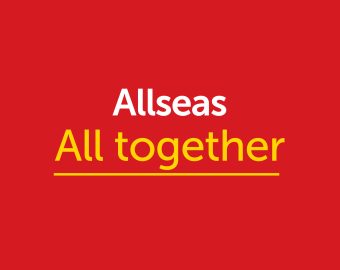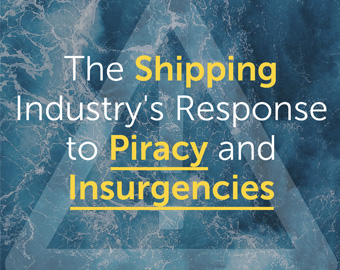Improving cost efficiency in sea freight : The software
01 December 2015
An interview with Wayne Booth, Resource Manager
It’s all about intelligence, intelligent systems and using data analytics to help find the best possible shipping rates for the customer says Wayne Booth. He’s inspired by the likes of Uber taxis and Airbnb and his mission is to find out more about how these models, based on highly automated, intelligent data can be applied to Allseas’ business.
Allseas has created a unique resource for staff handling full container load (FCL) shipments; it provides substantial efficiency and cost improvements already, and Wayne and his team are constantly updating and tweaking this for best results.
“Our system is able to give instant quotes,” he says. “A client might come to us for a price from Ipswich to Shanghai; we can give them a price in a second.”
Allseas has good reason to be confident in the quality of this system; it is so good that certain companies are using the resource to benchmark, get a quote and go back to their customers within a few minutes. However, the system can track that. “If we know that a customer has asked for 250 quotes but only taken four bookings, then it’s likely that they are using our expertise but not our services. It would get to a point where one of our managers would visit for a discussion and to improve our customer relationship!” For some time, Allseas’ matrix system has provided quotes using the lines’ basic rates – based on information collected by the team day in, day out. There is one dedicated person collating and inputting this information and the knowledge she has gained is phenomenal, says Wayne.
More recently, the matrix has been expanded to include haulage – recognising that the cheapest sea freight doesn’t always add up to the cheapest solution.
“Take a journey from Manchester to Sydney. One line might charge £800 sea freight and £500 haulage. Another might charge £1,000 sea freight but only £200 haulage. We have spent the last four months integrating seven major carriers’ haulage rates into our system. That means if we quote quay to quay, option one would be cheaper and we would be informing our staff to take that choice. But if door-to-door, option two would be overall cheaper. Now we can take both into account and give a competitive rate bringing costs down even further.”
This is a huge undertaking; Allseas can quote for freight from any 42,000 collection points in the UK to well over 200 destinations. And bearing in mind that there are seven places called Bolton in the UK, it’s easy to understand the scale of work involved in creating and fine-tuning this program.
As a result, users can access the online hub to get a containerised freight rate and compared the preferred option, cheapest option, etc. There is, says Wayne, often no logic in some of the rates offered by shipping lines. Sometimes two towns are just a mile apart, but the price differential can be more than 100%. “Having established that, we can create an average price per zone, and give customers tailored advice. If the customer is looking to book from one place and it is expensive, they might like to consider the next place. We have taken in all that information and manipulated it to gain the best price, and to have all of that information at our fingertips.”
As Wayne says, knowledge is Allseas’ best asset but that knowledge, intelligence, data, etc., can all too often be hidden in one individual’s emails. Allseas has put the emphasis on sharing information on its central hub and ensuring it is always up to date. In short, France Bacon was right: knowledge is power – but only if you can locate that knowledge and make efficient use of it!
Sign up to our newsletter
To receive bi-monthly industry updates, plus opinion and insights from our expert Logistics Consultants, sign up here.
This site is protected by reCAPTCHA and the Google
Privacy Policy and Terms of Service apply.


